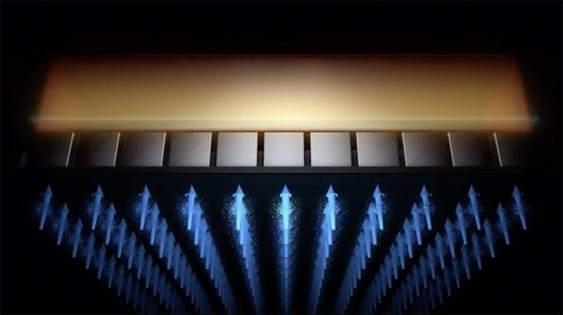Researchers have made a critical advance in the architecture of quantum chips that can help make quantum computing a reality.
Researchers from the University of South Wales Sydney have found a replacement for wires in qubits, which are the basic units of information used in a silicon quantum processor. They suggest replacing the wires with a magnetic field.
Quantum Computing Critical Advancement: Use Magnetic Field

The latest critical advancement in the field of quantum computing involves making a switch in the architecture of quantum chips.
According to a report by Digital Trends, researchers have come up with an idea to use a magnetic field above quantum chips instead of the wires that are currently being used to control qubits.
These wires, according to the report, "take up space on the chip and generate heat."
"This poses some real challenges if we want to scale up to the millions of qubits that a quantum computer will need to solve globally significant problems, such as the design of new vaccines," lead author Dr. Jarryd Pla said in a statement posted on the University of South Wales Sydney (UNSW Sydney) website.
What Dr. Pla and his team did was to remove the wires next to the qubits before introducing a new component that was placed above the chip. The component is a crystal prism referred to as a dielectric resonator, which can shrink down the wavelength of microwaves.
By shrinking down the wavelength of microwaves, there can be a more efficient conversion of power into the magnetic field, which is the one that controls the spin of qubits.
Dr. Pla and his team were able to create a prototype of the resonator technology they came up with. They then partnered with Professor Andrew Dzurak so that they could test the technology on silicon qubits.
The research of Dr. Pla and his team has been published in the Science Advances journal.
Related Article: Quantum computing: Is it real or is it hype?
What's Next for Quantum Computing Advancement?
According to the post on the UNSW website, Dr. Pla and his team are looking to make a simplified design of silicon quantum processors using the new quantum computing advancement they came up with.
Dr. Pla has acknowledged the present engineering challenges have to be resolved first before quantum computing can be a reality. However, he says that they are excited now that there is a way to control qubits.
What is Quantum Computing?
As defined by Investopedia, quantum computing is "an area of computing focused on developing computer technology based on the principles of quantum theory (which explains the behavior of energy and material on the atomic and subatomic levels)."
Devices that perform such computations are known as quantum computers. What makes them different from regular computers is that the latter "can only encode information in bits that take the value of 1 or 0." Quantum computing, on the other hand, makes use of qubits, otherwise known as quantum bits, which have the ability to exist both 1 and 0 at the same time.
The idea of quantum computing first began in the 1980s thanks to Paul Benioff, a physicist who proposed the quantum mechanical model.
Also Read: Most Powerful Quantum Computer: Chinese Developer Claims to Trample Google's Performance
This article is owned by Tech Times
Written by Isabella James
![Apple Watch Series 10 [GPS 42mm]](https://d.techtimes.com/en/full/453899/apple-watch-series-10-gps-42mm.jpg?w=184&h=103&f=9fb3c2ea2db928c663d1d2eadbcb3e52)



